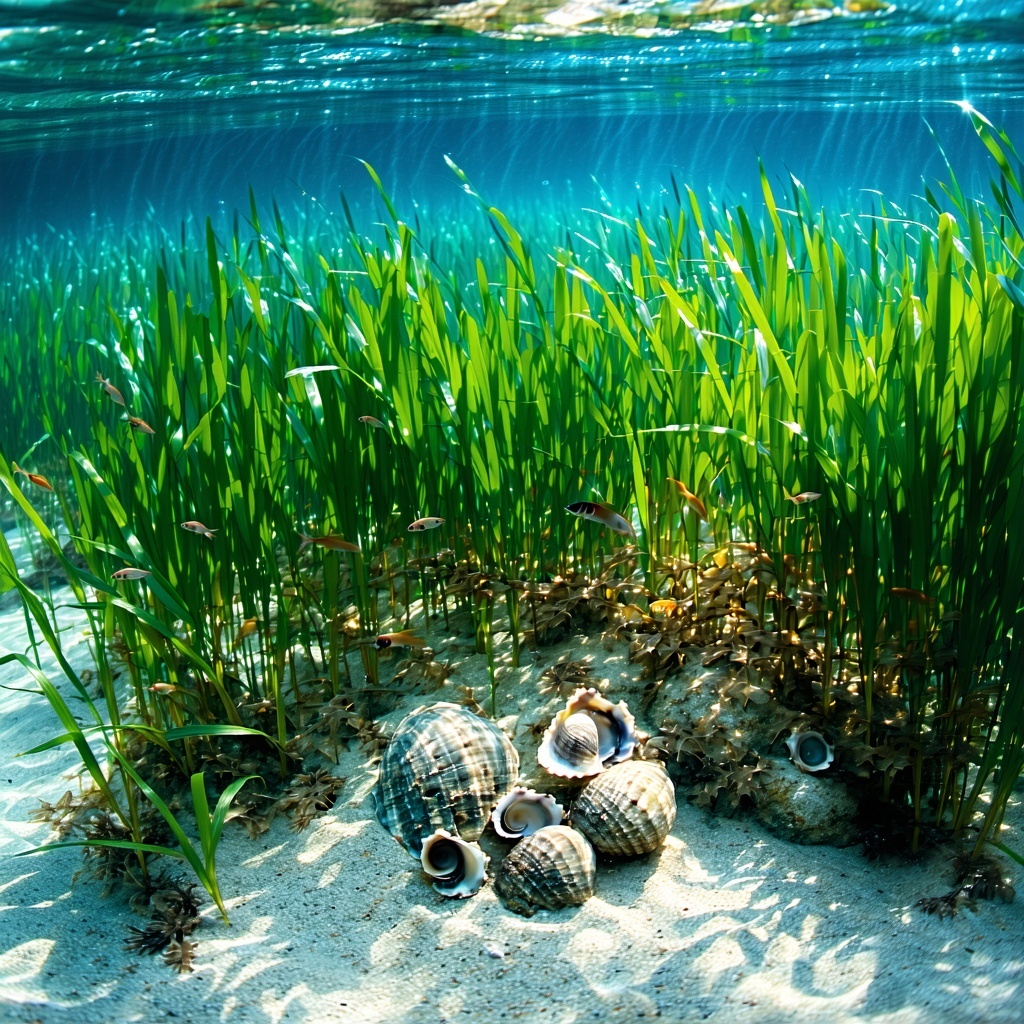In the fight against climate change, the Chesapeake Bay is home to two of nature’s most effective—yet often overlooked—climate warriors: oysters and sea grass. These ecosystem engineers don’t just support marine life; they actively clean water, trap carbon, and build resilience against rising seas. As the climate crisis accelerates, their role in capturing “blue carbon” has never been more crucial.
Oysters: Water Purifiers and Carbon Architects
Eastern oysters (Crassostrea virginica) are remarkable organisms. Each adult can filter up to 50 gallons of water per day, removing excess nitrogen, phosphorus, and sediment that cloud the Bay and fuel harmful algal blooms. Their shells also lock carbon away in the form of calcium carbonate—a process that, over time, contributes to carbon sequestration.
Recent efforts to restore oyster reefs across the Chesapeake are yielding measurable success. As of late 2024, restoration work has been completed in eight of the Bay’s ten priority tributaries, covering nearly 2,300 acres of oyster reefs. In Virginia’s Lynnhaven River, monitoring reveals densities as high as 3,400 oysters per square meter—a density that reflects not only ecological health but also the ability to improve water clarity on a massive scale.
These gains don’t just represent restoration—they’re a climate adaptation strategy. By cleaning the water and providing habitat, oyster reefs act as the Bay’s immune system, supporting biodiversity while enhancing water quality.
Sea Grass: The Bay’s Carbon Sinks
Beneath the surface, submerged aquatic vegetation (SAV)—commonly referred to as sea grass—anchors the ecosystem in another vital way. These grasses capture carbon dioxide from the atmosphere and bury it in underwater sediments where it can remain for centuries. In doing so, they serve as one of the planet’s most effective carbon sinks.
Sea grass beds also provide essential habitat for fish and shellfish, stabilize sediments, and trap pollutants. But they depend on clean, sunlit water—which is where their partnership with oysters becomes critical.
The 2023 Chesapeake Bay SAV survey reported approximately 82,900 acres of grass beds, a 7% increase from 2022. While that’s a meaningful recovery, it still falls short of the 108,000-acre peak recorded in 2018, and represents only 61% of the 2025 interim restoration target of 130,000 acres. Continued progress will depend on clean water, thoughtful policy, and sustained investment in restoration efforts.
Nature’s Perfect Partnership
What makes oysters and sea grass such a powerful pair is their synergy. Oysters clear the water, allowing more light to penetrate and support photosynthesis in sea grass beds. In return, healthy grass beds trap sediment, reduce wave energy, and create stable environments ideal for young oysters to thrive.
Together, they form a self-reinforcing cycle of restoration. As each system strengthens the other, the Bay’s overall resilience increases—supporting fisheries, buffering coastlines against erosion, and accelerating carbon capture.
The Path Ahead
Nature-based solutions like oyster reef and sea grass restoration are not just about bringing back what was lost—they’re about preparing for what’s next. As sea levels rise and the effects of climate change intensify, investments in these systems offer a rare win-win: ecosystem recovery and climate mitigation.
The Chesapeake Bay remains a proving ground for this work. With 8 of 10 oyster restoration zones nearly complete and SAV acreage on the rise, we’re seeing firsthand what can happen when science, policy, and nature align. These unsung heroes of climate change are no longer operating in the background—they’re stepping into the spotlight as vital agents of resilience and renewal.
Why we wanted to share this article
At GO2 Delivery, we actively support Chesapeake Bay restoration as part of our Beyond Net Zero Strategy—investing in marine shoreline ecosystems that sequester more CO₂ per acre than any other natural system on Earth, while boosting local economies and building climate-resilient communities through sustainable aquaculture. Learn more and get involved!

